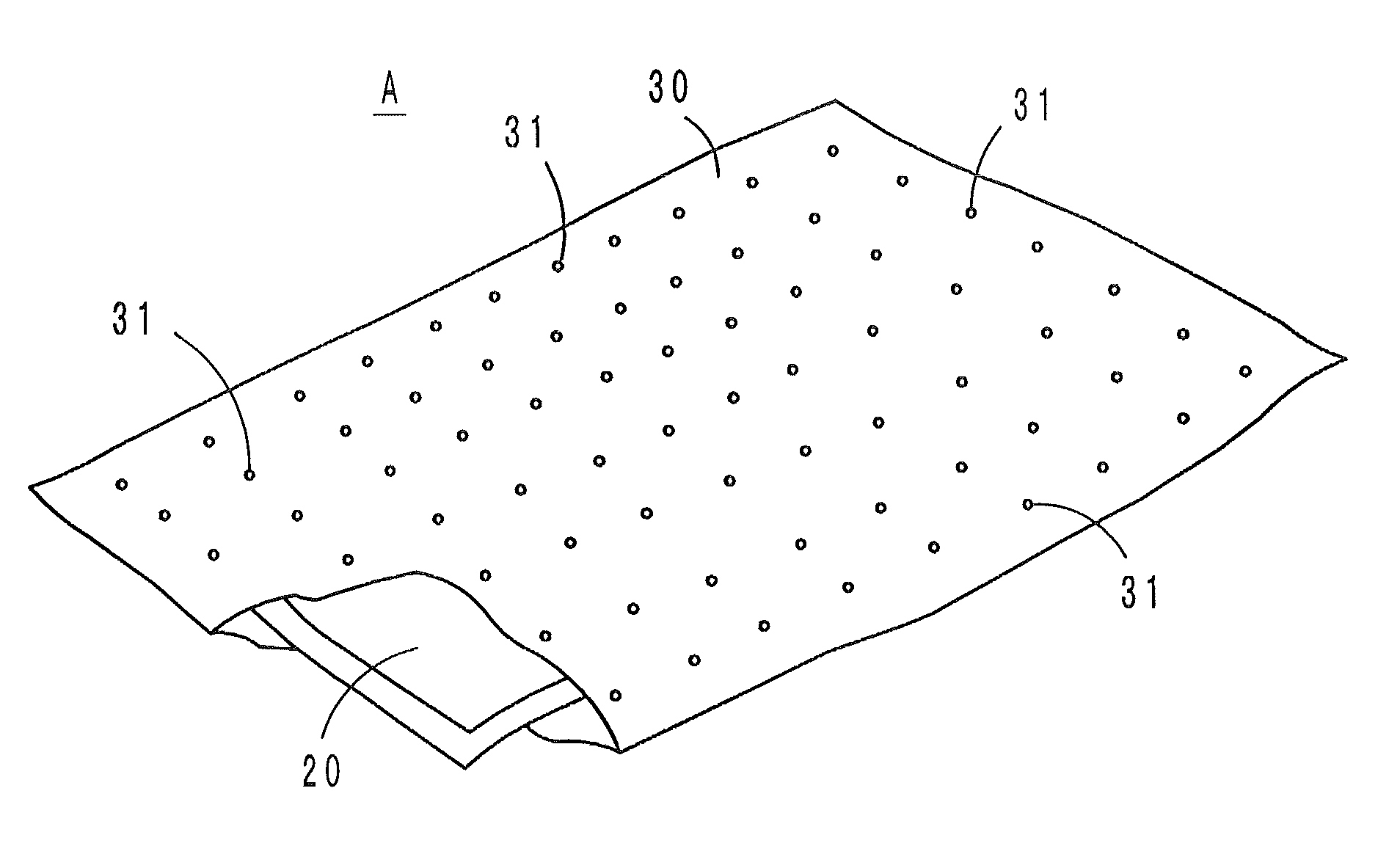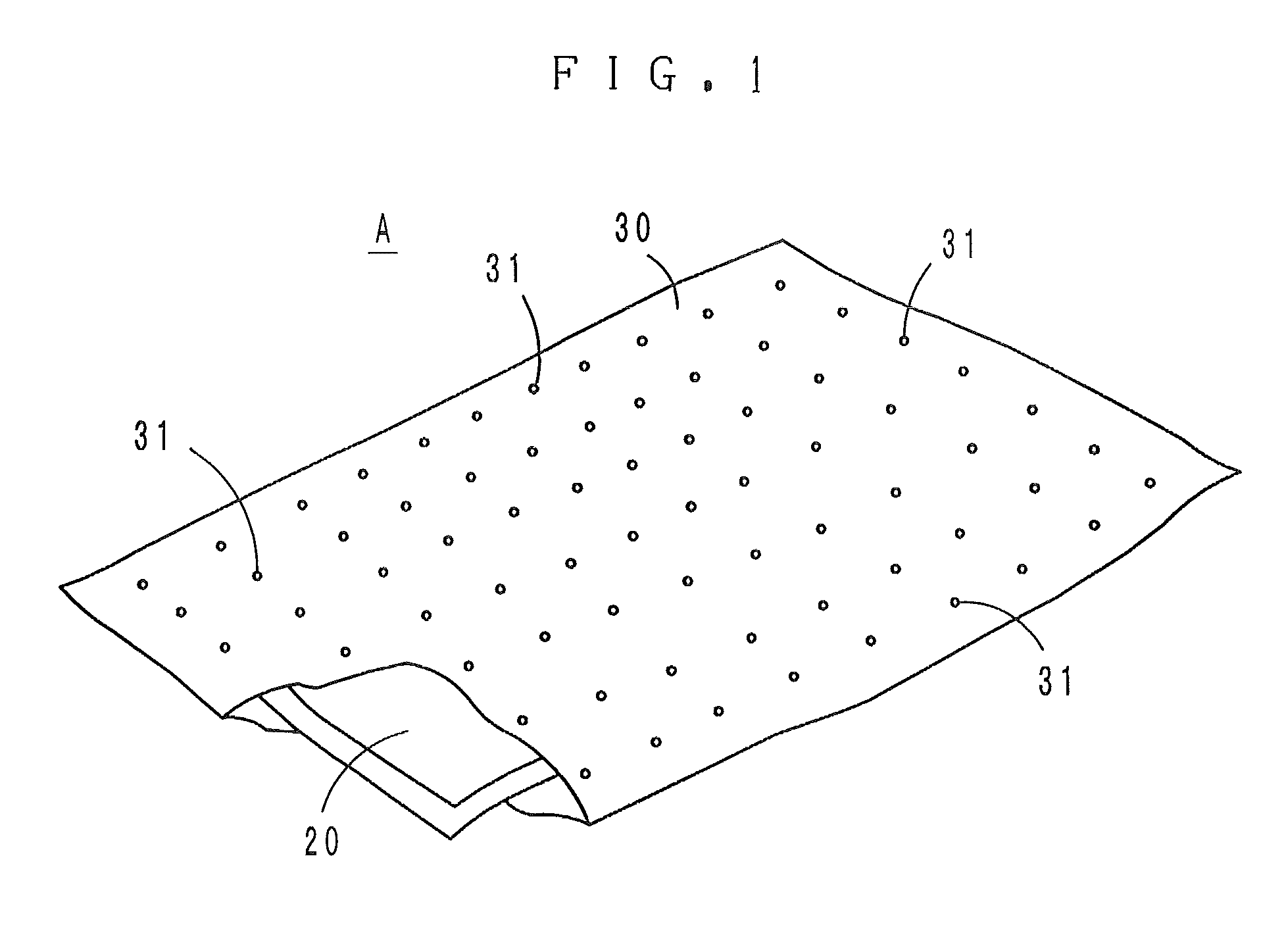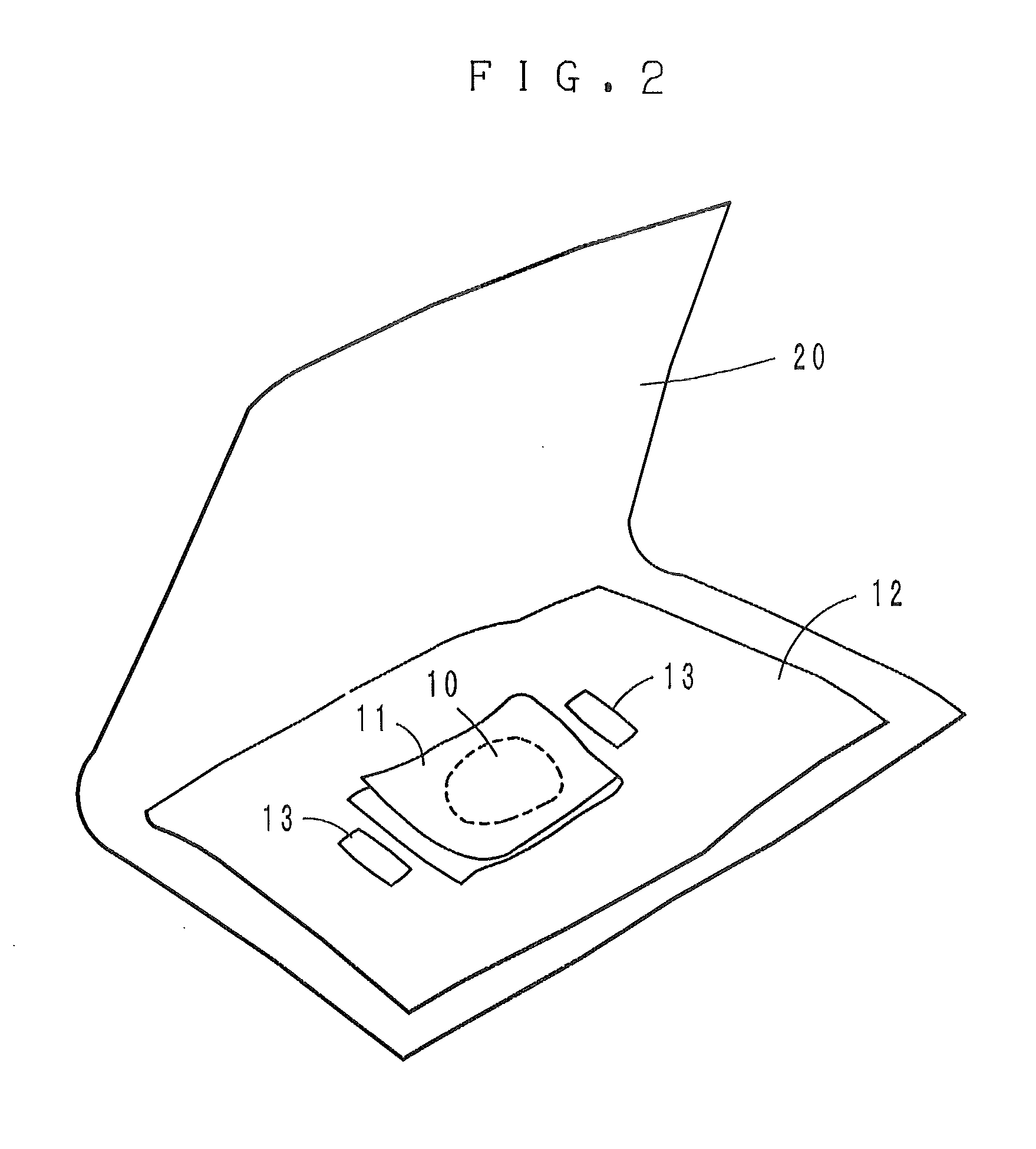Mite trapping mat
a technology for trapping mats and mites, applied in the field of mite trapping mats and mite trapping paper containers, can solve the problems of increasing manufacturing costs, removing mats, and reducing the number of mites, so as to achieve the effect of attracting mites and containing mites
- Summary
- Abstract
- Description
- Claims
- Application Information
AI Technical Summary
Benefits of technology
Problems solved by technology
Method used
Image
Examples
first example
; See FIG. 1 to FIG. 3
[0025]A mite trapping mat A, as shown in FIGS. 1, 2 and 3, which is the first example, generally includes a mite attracting material 10, a film bag 30 enclosing the mite attracting material 10, and a buffer element 20 which forms a space inside the film bag 30.
[0026]Mites have the property of liking the scent of an unsaturated fatty acid rich substance. Therefore, the mite attracting material 10 used is preferably an oblate ball which is made of, for example, wheat flour, dried fish powder, or biscuit powder kneaded with rapeseed oil. The mite attracting material 10, which is enclosed in a small bag 11, is placed at a generally central portion of a double-sided adhesive tape 12. A desiccating agent 13 may be placed on both sides of the attracting material 10. The small bag 11 is made of a highly breathable fabric, such as gauze, or a nonwoven fabric, in the form of a folio. As the desiccating agent 13, silica gel or the like can be preferably used.
[0027]The buf...
second example
; See FIG. 4 to FIG. 6
[0034]A mite trapping paper container B, as shown in FIG. 4, which is the second example, generally includes a mite attracting material 110 in the form of powder, a buffer element 115 which contains the mite attracting material 110, and a flat paper box case 120 in which the buffer element 115 is stored.
[0035]The box case 120 is preferably made of cardboard but may be made of synthetic paper, a sheet containing synthetic resins, corrugated paper, or the like. The box case 120 has a large number of small holes 125 penetrating from the outer surface to the inner surface, and the inside of the box case 120 is a dark space.
[0036]The box case 120 is in a developed form shown in FIG. 6 when it is manufactured. That is, it is constituted of a top surface portion 120a, a bottom surface portion 120b, right and left lateral surface portions 120c, lid portions 120d at opposite end surfaces, and flap portions 120e at the four corners. The small holes 125 are formed in the ...
third example
; See FIG. 7
[0044]A mite trapping paper container C, which is the third example, is configured such that, as shown in FIG. 7, a granular desiccating agent 111 (e.g., silica gel) is mixed together with the mite attracting material 110 inside a flocculent buffer element 115, and an adhesive agent 112 (e.g., double-sided adhesive tape) is provided on the ceiling portion of the box case 120. The configuration of the box case 120 is the same as that of the second example. The functions and effects are basically the same as those of the second example.
[0045]Since mites are vulnerable to low-humidity environments, providing the desiccating agent 111 inside the box case 120 is preferable in terms of enhancing the death of trapped mites. Mites are also adhesively trapped by the adhesive agent 112. Note that the desiccating agent 111 may be placed at any position so long as it is within the box case 120. The adhesive agent 112 may be placed at any position other than the ceiling portion of th...
PUM
 Login to View More
Login to View More Abstract
Description
Claims
Application Information
 Login to View More
Login to View More - R&D
- Intellectual Property
- Life Sciences
- Materials
- Tech Scout
- Unparalleled Data Quality
- Higher Quality Content
- 60% Fewer Hallucinations
Browse by: Latest US Patents, China's latest patents, Technical Efficacy Thesaurus, Application Domain, Technology Topic, Popular Technical Reports.
© 2025 PatSnap. All rights reserved.Legal|Privacy policy|Modern Slavery Act Transparency Statement|Sitemap|About US| Contact US: help@patsnap.com



